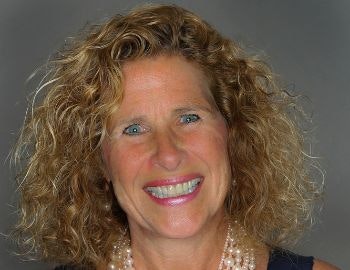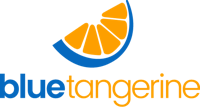All Podcast Episodes
This week on The Home Builder Digital Marketing Podcast, Stephanie Walker of Rancho Mission Viejo joins Greg and Kevin to discuss how home builders and developers market to home buyers in master-planned communities. This week on The Home Builder Digital Marketing Podcast, Megan Bakel of Landsea Homes joins Greg and Kevin to discuss how home builders can merge sales and marketing to convert more leads and create a better home buying experience. This week on The Home Builder Digital Marketing Podcast, Jay Dixon of AdsIntelligence Marketing joins Greg and Kevin to discuss home builder digital marketing strategies that generate more qualified leads. This week on The Home Builder Digital Marketing Podcast, Greg and Kevin recap highlights from the NAHB International Builders' Show in Las Vegas where home builder digital marketers were able to connect and learn from the industry's digital marketing experts. This week on The Home Builder Digital Marketing Podcast, Jimmy Diffee of Bokka Group joins Greg and Kevin to discuss the 2024 Home Buyer Conversion Report, a detailed analysis that will help home builders understand the key influences that cause home buyers to take action. This week on The Home Builder Digital Marketing Podcast, Tom Nelson of NDG Communications joins Greg and Kevin to discuss why exceptional home builder digital marketing requires adaptability and open-mindedness. This week on The Home Builder Digital Marketing Podcast, Greg and Kevin discuss how home builders can use geofencing for more precise ad targeting and to generate more qualified home buyer leads. This week on The Home Builder Digital Marketing Podcast, Russ Wright of VisionAIry Success Engineering joins Greg and Kevin to discuss how AI tools can help home builders revolutionize their business and transform the home buying experience. This week on The Home Builder Digital Marketing Podcast, Melissa Cervin of Lombardo Homes joins Greg and Kevin to discuss how home builder digital marketers can use innovative tools to improve customer experience and increase sales. This week on The Home Builder Digital Marketing Podcast, John Peragine of Audience Town joins Greg and Kevin to discuss how home builders can market more effectively by getting to know their audience through data analytics. This week on The Home Builder Digital Marketing Podcast, Josh Paul of Homebuilder Ops joins Greg and Kevin to discuss the 2024 New Home Buyer Customer Experience Expectations, a nationwide research study of buyers' residential construction sales and marketing preferences. This week on The Home Builder Digital Marketing Podcast, Doris Pearlman of Possibilities for Design joins Greg and Kevin to discuss how working with professional interior designers and merchandisers to design model homes can help home builders create spaces that connect with home buyers and increase revenue. Blue Tangerine Outhouse On this bonus episode of The Home Builder Digital Marketing Podcast, Grey and Kevin share a CommVersion webinar with Nick Chitty, during which they discuss key customer touchpoints that build brand trust and drive sales. This week on The Home Builder Digital Marketing Podcast, Brian Newquist of Kovach Marketing joins Greg and Kevin to discuss the importance of personalizing home builder marketing to create a stronger connection with home buyers. This week on The Home Builder Digital Marketing Podcast, Bill Sieversten of Milesbrand joins Greg and Kevin to discuss how home builders can establish an effective name and a brand that will help build trust and create an emotional connection with home buyers. This week on The Home Builder Digital Marketing Podcast, Rose Quint of the National Association of Home Builders joins Greg and Kevin to discuss the NAHB’s 2024 edition of What Home Buyers Really Want, a nationwide survey of recent and prospective home buyers. This week on The Home Builder Digital Marketing Podcast, Logan Shinholser of Contractor Growth Network joins Greg and Kevin to discuss how home builders can generate more quality referral leads online. This week on The Home Builder Digital Marketing Podcast, David Lynch of OpenHouse.ai joins Greg and Kevin to discuss how technology can help home builders forecast home sales and help guide marketing strategies. This week on The Home Builder Digital Marketing Podcast, Christian Calusa of New Estate Only joins Greg and Kevin to discuss how home builders can connect with international home buyers in the United States and abroad. This week on The Home Builder Digital Marketing Podcast, Brent Bommes of RCT Built joins Greg and Kevin to discuss how home builders can transform business with technology and innovation. This week on The Home Builder Digital Marketing Podcast, Erin Yarbrough of Ideal Homes and Neighborhoods joins Greg and Kevin to discuss the home builder digital marketer’s role in driving more qualified home buyer traffic. On this week's episode of The Home Builder Digital Marketing Podcast, Greg and Kevin recapture moments from the 2024 Home Builder Digital Marketing Summit. They give a synopsis of the speakers, roundtable discussions, and the marketing and OSC education tracks. If you could not make it this year, listen to this week's episode to learn more about what you missed. Don't forget to mark your calendars for the 2025 Home Builder Digital Marketing Summit coming in September in Atlanta, Georgia. This week on The Home Builder Digital Marketing Podcast, Kyle Lintala of BILT Solutions joins Greg and Kevin to discuss the value of data management systems for home builders. This week on The Home Builder Digital Marketing Podcast, Terrell Turner of Caruso Homes joins Greg and Kevin to discuss the qualities and skills it takes to become a golden online sales counselor for your home builder. Blue Tangerine Outhouse This week on The Home Builder Digital Marketing Podcast, Joel Berner of realtor.com joins Greg and Kevin to discuss how examining current economics can help home builders understand new construction market conditions. This week on The Home Builder Digital Marketing Podcast, Rachel Starratt of Red Door Homes joins Greg and Kevin to discuss why every home builder should have an online sales counselor. This week on The Home Builder Digital Marketing Podcast, Jason Rhoads of Rhoads Creative joins Greg and Kevin to discuss how home builders can leverage AI in digital marketing to gain insights and improve efficiency. On this bonus episode of The Home Builder Digital Marketing Podcast, Greg and Kevin give a preview of the highly anticipated 2024 Home Builder Digital Marketing Summit. The Summit will include engaging learning opportunities, small group roundtable discussions, marketing and OSC education tracks, time to network with leading industry experts and peers, good food, and fun. This week on The Home Builder Digital Marketing Podcast, Spencer Powell of Builder Funnel joins Greg and Kevin to discuss the power of content marketing for home builders in attracting, engaging, and capturing new home buyers. This week on The Home Builder Digital Marketing Podcast, Sarah Cook of New Home Directory joins Greg and Kevin to discuss how New Homes Directory can help home builders connect with new home buyers. This week on The Home Builder Digital Marketing Podcast, Qadra Evans of Zillow New Construction joins Greg and Kevin to discuss the 2024 Zillow New Construction Consumer Housing Trends Report and what the results reveal about new construction buyers. This week on The Home Builder Digital Marketing Podcast, Leah Fellows of Blue Gypsy Inc. and Carol Morgan of Denim Marketing join Greg and Kevin to discuss the 4th Annual Online Homebuyer Mystery Shop Report and how home builders can use the results to improve their follow-up process. This week on The Home Builder Digital Marketing Podcast, Sara Gutterman of Green Builder Media joins Greg and Kevin to discuss how generational marketing can help home builders attract and engage the right home buyer with the right message at the right time. This week on The Home Builder Digital Marketing Podcast, Jason Benedict of Automation Agency joins Greg and Kevin to discuss how home builders can leverage automation and AI to improve efficiency and grow business. This week on The Home Builder Digital Marketing Podcast, Jake Kaplan of Garman Homes joins Greg and Kevin to discuss why home builders should return to the basics when it comes to digital marketing. This week on The Home Builder Digital Marketing Podcast, David Belman of Belman Homes joins Greg and Kevin to discuss how home builders can advocate for housing affordability. Blue Tangerine Outhouse This week on The Home Builder Digital Marketing Podcast, Christopher Brown of NEXT Group of Companies joins Greg and Kevin to discuss how and why home builder digital marketers should build emotional connections with home buyers earlier in the home buying journey. On this bonus episode of The Home Builder Digital Marketing Podcast, Al Trellis of The Home Builder’s Network and Bill Gelbaugh of OutHouse join Kevin to discuss the practical applications of AI in home building. This week on The Home Builder Digital Marketing Podcast, Craig Neal of Toll Brothers joins Greg and Kevin to discuss how home builders can create customer-focused sales and marketing teams. This week on The Home Builder Digital Marketing Podcast, Renee Stowe of Renee Stowed Marketing Solutions joins Greg and Kevin to discuss how consistently collecting and analyzing data can boost home builder digital marketing efforts. This week on The Home Builder Digital Marketing Podcast, Jennifer Johnson of Olivia Clarke Homes joins Greg and Kevin to discuss the value female perspectives bring to the home building industry. This week on The Home Builder Digital Marketing Podcast, Ben Culbreth of Culbreth Copywriting joins Greg and Kevin to discuss how home builders can create compelling copywriting that connects with potential home buyers. This week on The Home Builder Digital Marketing Podcast, Shawn McGuire of Celebrity Homes joins Greg and Kevin to discuss why home builders must create a stellar home buyer experience, especially in the current housing market. This week on The Home Builder Digital Marketing Podcast, Jacob Bettis of Insignia Studios joins Greg and Kevin to discuss how strategic planning can help home builders create, share, and track impactful visual content. This week on The Home Builder Digital Marketing Podcast, Matt Brutshe of 500 Rockets Marketing joins Greg and Kevin to discuss how home builder digital marketers can become AI-ready. This week on The Home Builder Digital Marketing Podcast, Doug Newell of Swarmalytics joins Greg and Kevin to discuss how home builders can use AI to optimize building processes and make accurate sales predictions. This week on The Home Builder Digital Marketing Podcast, Carol Morgan of Denim Marketing and Kimberly Mackey of New Homes Solutions Consulting join Greg and Kevin to discuss the roles of home builder sales and marketing teams and how they can work together to drive success. This week on The Home Builder Digital Marketing Podcast, Amberly Mioduszewski of Melia Homes Joins Greg and Kevin to discuss how home builders can ensure the success of their Online Sales Counselors. This week on The Home Builder Digital Marketing Podcast, Courtney Stewart of Denim Marketing joins Greg and Kevin to discuss the most effective social media strategies and platforms for home builders. This week on The Home Builder Digital Marketing Podcast, Felicia Berry of Viera Builders joins Greg and Kevin to discuss how online sales counselors can bridge the gap between home builder sales and marketing teams to ensure no leads are left behind. This week on The Home Builder Digital Marketing Podcast, Dennis O’Neil of Oneil Interactive joins Greg and Kevin to discuss how important maintenance is in creating a strong and successful home builder website. This week on The Home Builder Digital Marketing Podcast, Mindy Lepp of LEPPDESIGN joins Greg and Kevin to discuss the benefits of outsourcing home builder digital marketing. This week on The Home Builder Digital Marketing Podcast, Jim Work of Silverthorne Homebuilders joins Greg and Kevin to discuss how learning from other home builders’ knowledge and experience can improve business. This week on The Home Builder Digital Marketing Podcast, Hayley Selden of Valiant Spaces joins Greg and Kevin to discuss how home builders and remodelers can foster trust with homebuyers. This week on The Home Builder Digital Marketing Podcast, Bridget Cramer of Lindus Construction joins Greg and Kevin to discuss how home builders and remodelers can use social media to expand marketing efforts. This week on The Home Builder Digital Marketing Podcast, Jessica Fritz of J.Cor Architecture joins Greg and Kevin to discuss how home builders can connect with homebuyers by creating unique home buying experiences. This week on The Home Builder Digital Marketing Podcast, Derek Schairer and Luke Groesbeck of Foundation join Greg and Kevin to discuss how to provide an excellent homebuyer experience that creates happier homeowners and more efficient and profitable home builder teams. This week on The Home Builder Digital Marketing Podcast, Randy Stanbury of 4 Level Coach joins Greg and Kevin to discuss how to successfully grow your home builder business. This week on The Home Builder Digital Marketing Podcast, Tyler Stouder of Homebuilder Ops joins Greg and Kevin to discuss the power a CRM can offer home builders through tracking, managing, and analyzing customer interactions and data. On this bonus episode of The Home Builder Digital Marketing Podcast, Greg and Kevin share brief but valuable sales and marketing tips from experts at the 2024 International Builders' Show. Blue Tangerine Outhouse This week on The Home Builder Digital Marketing Podcast, Melissa Morman of Built4f joins Greg and Kevin to discuss how home builders can successfully integrate new technology into their businesses. This week on The Home Builder Digital Marketing Podcast, Justin Doornbos of BombBomb joins Greg and Kevin to discuss how home builders can use simple video messaging to elevate communication with home buyers. This week on The Home Builder Digital Marketing Podcast, Bryan Keve of Traditions Custom Builders joins Greg and Kevin to discuss how home builders can nurture lasting relationships with homebuyers. This week on The Home Builder Digital Marketing Podcast, Barbara Wray of Wick Marketing joins Greg and Kevin to discuss how critical it is for home builders to build trust with homebuyers. This week on The Home Builder Digital Marketing Podcast, Reyna Estrada of M/I Homes joins Greg and Kevin to discuss how home builders can build an effective online sales team. This week on the Home Builder Digital Marketing Podcast Christine Vangsness of Dabbert Custom Homes joins Greg and Kevin to discuss the importance of creating solutions to home builder digital marketing challenges. This week on The Home Builder Digital Marketing Podcast, Kellie Little of FieldStone Homes joins Greg and Kevin to discuss how home builders can keep digital marketing fresh by learning and implementing new technology. This week on The Home Builder Digital Marketing Podcast, Lori Ann Dinkins of Mood Interior Designs joins Greg and Kevin to discuss the power of good interior design can have in helping home builders connect with home buyers and sell more homes. This week on The Home Builder Digital Marketing Podcast, Haley Naebig of NoviHome joins Greg and Kevin to discuss how home builders can enhance customer engagement and increase sales through customizing the home buyer experience. This week on The Home Builder Digital Marketing Podcast, Jim Jacobi of Parkland Communities and Parkland Residential joins Greg and Kevin to explore the build-to-rent market. This week on The Home Builder Digital Marketing Podcast, Chris Griggs of LaRuche Photo joins Greg and Kevin to discuss how to craft quality home builder photography that elevates your brand and allows your homes to stand out in virtual environments. This week on The Home Builder Digital Marketing Podcast, Brent Niemuth of J.Schmid joins Greg and Kevin to discuss how home builders start building an authentic, well-defined brand story that resonates with customers and is recognized in the industry. Blue Tangerine Outhouse This week on The Home Builder Digital Marketing Podcast, Arthur Chapin of Move, Inc., operator of realtor.com joins Greg and Kevin to discuss how home builders can better educate home buyers about new home construction. This week on The Home Builder Digital Marketing Podcast, Bill Gaul of BuildersUpdate.com joins Greg and Kevin to discuss how home builders who team up with agents experience more visibility in the market and an increase in sales. This week on The Home Builder Digital Marketing Podcast Dia Bondi, author of Ask Like an Auctioneer, joins Greg and Kevin to discuss how home builder digital marketers and salespeople can learn how to ask for more and get it. This week on The Home Builder Digital Marketing Podcast, Greg and Kevin review the 2023 Home Builder Digital Marketing Summit, which included two full days of interactive sessions, small group roundtable discussions, expert presenters, OSC education, and much more. This week on The Home Builder Digital Marketing Podcast, Reilly LePage of Logel Homes joins Greg and Kevin to discuss how home builders can begin to elevate the online home buying process by adopting new technology. This week on The Home Builder Digital Marketing Podcast, Jaclyn Centofanti of Hulbert Homes joins Greg and Kevin to discuss the importance of home builders identifying and focusing on the ideal home buyer. This week on The Home Builder Digital Marketing Podcast, Katlyn Slocum of Katlyn Slocum Design joins Greg and Kevin to discuss how strategy-driven websites will help home builders turn more visitors into leads and turn more qualified leads into customers. This week on The Home Builder Digital Marketing Podcast, Michael Shaw of EnvisionVR joins Greg and Kevin to discuss how virtual experiences can help home builders provide a more immersive, interactive, and engaging experience to home buyers. This week on The Home Builder Digital Marketing Podcast, Kate Jarrell of True Homes joins Greg and Kevin to discuss how home builder teams can better connect emotionally to prospective home buyers. This week on The Home Builder Digital Marketing Podcast, Steve Ormonde of Focus 360 joins Greg and Kevin to discuss the advantages of becoming an exceptional virtual home builder. This week on The Home Builder Digital Marketing Podcast, Abby Cornelius of Abby Cornelius Coaching joins Greg and Kevin to discuss how female mentorship can offer women in the home building industry the support, guidance, and understanding they need to be more effective leaders. This week on The Home Builder Digital Marketing Podcast, Heidi Schroeder of ECI Software Solutions joins Greg and Kevin to discuss how effective lead management tools can help home builders facilitate customer relationships, increase customer satisfaction, and promote business growth. Blue Tangerine Outhouse This week on The Home Builder Digital Marketing Podcast, Paul Gortzig of Bokka Group joins Greg and Kevin to discuss how home builders who proactively communicate with home buyers through the building process considerably enhance the customer experience. On this bonus episode of The Home Builder Digital Marketing Podcast, Greg and Leah Fellows talk with Kimberly Mackey and Carol Morgan on the Sales and Marketing Power Hour. They discuss what home builder sales and marketing should do after they capture a qualified lead. This week on The Home Builder Digital Marketing Podcast, Karyn Bonder of Livabl by Zonda joins Greg and Kevin to discuss the advantages of listing new construction homes on the Livabl platform. This week on The Home Builder Digital Marketing Podcast, Ty Brewer of HistoryMaker Homes joins Greg and Kevin to discuss how unifying home builder digital marketing and technology teams improve business. On this bonus episode of The Home Builder Digital Marketing Podcast, Greg and Kevin give a preview of the highly anticipated 2023 Home Builder Digital Marketing Summit. The Summit will include two full days of interactive sessions, small group roundtable discussions, expert presenters, OSC education, time to network with leading industry experts and peers, good food, and fun! This week on The Home Builder Digital Marketing Podcast, Barrett Davis of NterNow and HomeScribe joins Greg and Kevin to discuss how HomeScribe, a community-driven platform, educates home builders on best practices for using AI. This week on The Home Builder Digital Marketing Podcast, Alex Toth and Shannon McMahon from Opendoor join Greg and Kevin to discuss how home builders can eliminate uncertainty from the home buyer customer experience while still selling homes more quickly. This week on The Home Builder Digital Marketing Podcast, Chris Ashley of Hakes Brothers joins Greg and Kevin to discuss how a top-notch website can help home builder digital marketers generate more quality leads. This week on The Home Builder Digital Marketing Podcast, Don Dykstra and Cassius Adkison of Bloomfield Homes join Greg and Kevin to discuss how the one-house rule can help home builders look at digital marketing as more of an investment rather than an expense. This week on The Home Builder Digital Marketing Podcast, Will Zhang of OpenHouse.ai joins Greg and Kevin to discuss how home builders can use artificial intelligence tools to better understand and predict home buyer behavior. This week on The Home Builder Digital Marketing Podcast, Danette Beal of Digs joins Greg and Kevin to discuss how home builders can improve the customer experience by communicating, saving, and sharing all the information about a home in a single place. This week on The Home Builder Digital Marketing Podcast, Eric Ziegler of Landmark Homes joins Greg and Kevin to discuss how digital marketing and sales teams can keep customers off the home construction rollercoaster. This week on The Home Builder Digital Marketing Podcast, Alison Girard of Brookfield Residential joins Greg and Kevin to discuss how to determine the success of home builder digital marketing strategies. This week on The Home Builder Digital Marketing Podcast, Cory Charles of The SuperHero Mindset joins Greg and Kevin to discuss how home builder sales and marketing professionals can reach new levels of success by discovering the SuperHero within. This week on The Home Builder Digital Marketing Podcast, Tami Ostmark of Hamlet Homes joins Greg and Kevin to discuss how successful home building digital marketing plans promote experimenting and risk-taking. This week on The Home Builder Digital Marketing Podcast, Brenda Keo of Utility Connect joins Greg and Kevin to discuss how home builders can elevate their customer experience by connecting home buyers to relocation services throughout their whole journey. This week on The Home Builder Digital Marketing Podcast, Ben Marks and Leah Turner of Melinda Brody and Company join Greg and Kevin to discuss how new home builders improve the performance and success of their sales associates through mystery shopping evaluation. This week on The Home Builder Digital Marketing Podcast Kevin Hart of Aireal joins Greg and Kevin to discuss how immersive home builder technology can allow potential buyers to envision and experience their homes before they buy. This week on The Home Builder Digital Marketing Podcast, Jeff Schneider of Velocity23 joins Greg and Kevin to discuss how the right content marketing structure can help home builders produce sustained lead generation and increase home sales. This week on The Home Builder Digital Marketing Podcast, Mike Dildine and Jared Maybon of Build Better join Greg and Kevin to discuss how focusing on business development can help home builder business owners gain control of their businesses, enjoy being home builders again, and increase revenue. This week on The Home Builder Digital Marketing Podcast, Richard Penny of homeAR joins Greg and Kevin to discuss the capabilities that augmented reality technology has to significantly enhance the home buyer customer experience. This week on The Home Builder Digital Marketing Podcast, Chad Davies of Davies Imaging Group joins Greg and Kevin to discuss how home builders can elevate photography to create a more lasting impression on potential home buyers. This week on The Home Builder Digital Marketing Podcast, Kerry Mulcrone of Kerry & Co. joins Greg and Kevin to discuss how becoming a specialist in your home building area of expertise will build trust with home buyers and will ultimately lead to conversions. This week on The Home Builder Digital Marketing Podcast, Greg Fuson of Pacific Coast Builders Conference joins Greg and Kevin to discuss the opportunities PCBC offers home builder industry attendees. Blue Tangerine Outhouse This week on The Home Builder Digital Marketing Podcast, Gina Nixon of Thomas James Homes joins Greg and Kevin to discuss how putting customers first strengthens every aspect of a home building business. This week on The Home Builder Digital Marketing Podcast, Jason Harper of Hunter Quinn Homes joins Greg and Kevin to discuss why home builders should start integrating buy online processes. This week on The Home Builder Digital Marketing Podcast, Nick Chitty of CommVersion joins Greg and Kevin to discuss how to balance technology and human connection, particularly when using chatbots. This week on The Home Builder Digital Marketing Podcast, Caroline Ashe of Ivey Homes joins Greg and Kevin to discuss how important understanding analytics is when evaluating the success of digital marketing campaigns. This week on The Home Builder Digital Marketing Podcast, Kim Guley of Builder Boost joins Greg and Kevin to discuss how trust between new home builders and real estate agents helps build valuable relationships and facilitates more new home sales. This week on The Home Builder Digital Marketing Podcast, Greg and Kevin discuss and review some of the highlights of the 2023 NAHB International Builders' Show. This week on The Home Builder Digital Marketing Podcast, Alisa Poncher of Strategic Business Specialists joins Greg and Kevin to discuss why home builders must understand the various demographics of today’s new home buyers. This week is a special episode of The Home Builder Digital Marketing Podcast where we share a recorded webinar Greg did with Susan Baier of Audience Audit. In this webinar, they discuss the proprietary attitudinal research study that Blue Tangerine conducted to understand better how home buyers interact with home builders online. This week on The Home Builder Digital Marketing Podcast, Samantha Ostert of Skogman Homes joins Greg and Kevin to discuss how small changes in digital marketing strategy can lead to big results. This week on The Home Builder Digital Marketing Podcast, Carol Horton of Kindred Homes joins Greg and Kevin to discuss the value marketing mistakes can offer when they lead to opportunities, change, and growth. This week on The Home Builder Digital Marketing Podcast, Taylor Burtner of Manuel Builders joins Greg and Kevin to discuss why the fundamental purpose of home building is about connecting with people and impacting their lives through home ownership. This week on The Home Builder Digital Marketing Podcast, Sharra Mercer of the Gary Mercer Team joins Greg and Kevin to discuss how new construction builders and real estate agents can cooperate towards mutually beneficial results. Blue Tangerine Outhouse This week on The Home Builder Digital Marketing Podcast, Keith McKinney of New Home Star joins Greg and Kevin to discuss how sales teams can support home builder marketing processes. This week on The Home Builder Digital Marketing Podcast, Danielle Davis of McStain Neighborhoods joins Greg and Kevin to discuss how providing information creates transparency, trust, and authentic engagement with home buyers. This week on The Home Builder Digital Marketing Podcast, Ryan Hilliard of HypeAuditor joins Greg and Kevin to discuss creating successful influencer marketing strategies based on strong purposes and goals. This week on The Home Builder Digital Marketing Podcast, Corey Brady of Kartchner Homes joins Greg and Kevin to discuss the value of staying connected to buyers during the home buying process with consistent and clear communication. This week on The Home Builder Digital Marketing Podcast, Mert Karakus of Oda Studio joins Greg and Kevin to discuss the power of visuals in home builder digital marketing. This week on The Home Builder Digital Marketing Podcast, Janell Norton of DC DesignBar joins Greg and Kevin to discuss why successful home builder marketing starts with a story. This week on The Home Builder Digital Marketing Podcast, Eva Gribler of Onyx+East joins Greg and Kevin to discuss how to weather the continuous need for change in home builder marketing. This week on The Home Builder Digital Marketing Podcast, Ed Carey of Audience Town joins Greg and Kevin to discuss the importance of marketing real estate with quality customer data. This week on The Home Builder Digital Marketing Podcast, Steve Bradford of Sales Solve Everything joins Greg and Kevin to discuss balancing sales and marketing initiatives in the ebb and flow of the home building market. This week on The Home Builder Digital Marketing Podcast, Bob Schultz of The International New Home Sales Specialists joins Greg and Kevin to discuss how home builders can have successful home sales regardless of market conditions. This week on The Home Builder Digital Marketing Podcast, Gail Bonnstetter of Carpenter Homes joins Greg and Kevin to discuss how to bring a more personal approach to social media posts that don’t have to be perfect. This week on The Home Builder Digital Marketing Podcast, Kelly Borgen of Get Community joins Greg and Kevin to discuss effective ways to create and post social media content. This week on The Home Builder Digital Marketing Podcast, Mark Hirschfeld of Maronda Homes joins Greg and Kevin to discuss repurposing digital marketing content to expand audience reach. On this bonus episode of The Home Builder Digital Marketing Podcast, Kevin speaks with Shari Morton of Shared Drive at the 2022 Home Builder Digital Marketing Summit. This week on The Home Builder Digital Marketing Podcast, Bradley Davis of Woodbridge Pacific Group joins Greg and Kevin to discuss why high-level digital marketing is not just about looking at the data, it also involves creativity, skill, and listening to your gut. On this bonus episode of The Home Builder Digital Marketing Podcast, Greg speaks with Karyn Bonder of Zonda at the 2022 Home Builder Digital Marketing Summit. This week on The Home Builder Digital Marketing Podcast, Kate Pourhassanian of Unscripted Interior Designs joins Greg and Kevin to discuss how prioritizing personalization in marketing can distinguish a home builder and can improve the home buying experience. This week on The Home Builder Digital Marketing Podcast, Jordan Brown of K. Hovnanian Homes joins Greg and Kevin to discuss how to create sales and marketing teams that work well together. This week on The Home Builder Digital Marketing Podcast, Samantha Radloff of Hughston Homes joins Greg and Kevin to discuss the importance of creating value for potential customers through digital marketing. This week on The Home Builder Digital Marketing Podcast, Kelly Holladay of Max Connect Digital joins Greg and Kevin to discuss the importance of audience-focused of digital marketing campaigns across various platforms. This week on The Home Builder Digital Marketing Podcast, Jason Hardy of Ownly joins Greg and Kevin to discuss digitizing the home buying process and the advantages it has for builders and customers. This week on The Home Builder Digital Marketing Podcast, Char Kurihara of DRB Group joined Greg and Kevin to discuss how to provide digital information that will benefit both the home builder and the home buyer. This week on The Home Builder Digital Marketing Podcast, Gina Stango of Berks Homes joins Greg and Kevin to discuss the advantages of making social media a key component in home buyer marketing. This week on The Home Builder Digital Marketing Podcast, Chelsey Keenan of Group Two joins Greg and Kevin to discuss the benefits of utilizing the talents, skills, and abilities of millennials in marketing and how home builders can market more successfully to a younger generation of buyers. This week on The Home Builder Digital Marketing Podcast, Rachel Peters of Keystone Custom Homes joins Greg and Kevin to discuss why a team effort is required for successful digital marketing. This week on The Home Builder Digital Marketing Podcast, Jimmy Schaefer of Real Reach Marketing Group joins Greg and Kevin to discuss which SEO basics to focus on to boost digital marketing efforts. This week on The Home Builder Digital Marketing Podcast, Michelle Byrge of Landsea Homes joins Greg and Kevin to discuss the need for builders to balance digital marketing with human interaction and connection. This week on The Home Builder Digital Marketing Podcast, Jennifer Johnson of The Client Cube joins Greg and Kevin to discuss the benefits of outsourcing marketing needs, especially in the rapidly evolving home building environment. This week on The Home Builder Digital Marketing Podcast, Christine O’Toole of Independence Realty Trust joins Greg and Kevin to discuss how to master and manage multifamily digital marketing. This week on The Home Builder Digital Marketing Podcast, Melanie Gowans of Shane Homes Group of Companies joins Greg and Kevin to discuss why perfection is not required to be successful in home builder digital marketing. This week on The Home Builder Digital Marketing Podcast, Dan Russell of Vivid Labs joins Greg and Kevin to discuss neuromarketing and how it can help home builders inform creative marketing strategies and gain insights into their home buyers. This week on The Home Builder Digital Marketing Podcast, Brandon Elliott of Elliott Homes joins Greg and Kevin to discuss embracing the ever-changing home building market to progress toward a simpler and more efficient home buyer journey. In this special bonus invitation, Greg announces the 2022 Home Builder Digital Summit and invites listeners to join him and Kevin for the two-day event in Phoenix, Arizona on September 21st and 22nd. This week on The Home Builder Digital Marketing Podcast, Janette Hawkins of Gemcraft Homes joins Greg and Kevin to discuss how tracking analytics is the key to making better marketing decisions. This week on The Home Builder Digital Marketing Podcast, Julia Mallozzi of Bill Clark Homes and Legacy Homes joins Greg and Kevin to discuss the importance of digital marketing and why it’s worth the money. This week on The Home Builder Digital Marketing Podcast, Sarah Noel Block of Tiny Marketing joins Greg and Kevin to discuss utilizing content marketing effectively and efficiently. This week on The Home Builder Digital Marketing Podcast, Shawn Corkrean of Griffith Homebuilders joins Greg and Kevin to discuss the importance of merging offline and online tools to create a seamless home buying experience. This week on The Home Builder Digital Marketing Podcast, Tyler Grundmeier of Hubbell Homes joins Greg and Kevin to discuss effective online sales counselor communication practices. This week on The Home Builder Digital Marketing Podcast, Susan Paul of Costa Verde Homes joins Greg and Kevin to discuss the benefits of being a smaller home builder. This week on The Home Builder Digital Marketing Podcast, Chelsea Kimmey of CC Homes joins Greg and Keving to discuss the importance of focusing on the full home buying customer journey. This week on The Home Builder Digital Marketing Podcast, Betsy Feldmann of PRICE BLD-R and First Story Marketing joins Greg and Kevin to discuss how builders can make the new home buying journey simpler with more transparent pricing. This week on The Home Builder Digital Marketing Podcast, Darryl Stevenson of Arbor Homes and Elite Homes joins Greg and Kevin to discuss why home builders should understand that they are providing a service and not just selling a product. This week on The Home Builder Digital Marketing Podcast, Beth Russell of Stylecraft joins Greg and Kevin to discuss understanding and serving specific home buyers. This week on The Home Builder Digital Marketing Podcast, Teri Slavik-Tsuyuki of tst ink joins Greg and Kevin to talk about the results of the American At Home Study, and to discuss the importance of letting your human show in the customer experience. This week on The Home Builder Digital Marketing Podcast, Andrew Bazan of Lennar speaks with Greg and Kevin about the importance of examining and understanding the science of digital marketing data. This week on The Home Builder Digital Marketing Podcast, Alyssa Titus of Schell Brothers joins Greg and Kevin to discuss how marketing through community involvement can be a game-changer for builders. This week on The Home Builder Digital Marketing Podcast, Felicia Watson of NAHB joins Greg and Kevin to discuss the importance of achieving and maintaining ADA website compliance. Blue Tangerine Outhouse This week on The Home Builder Digital Marketing Podcast, David Hagan of Sales Uncomplicated joins Greg and Kevin to talk about the importance of adapting sales processes to fit the buyer and the market. In this week’s episode of The Home Builder Digital Marketing Podcast, Bob Mirman of Eliant joins Greg and Kevin to discuss dealing with difficult buyers and how managing expectations is a key factor in doing that. This week on The Home Builder Digital Marketing Podcast, Phillip Mejia of Blue Tangerine joins Greg and Kevin to discuss the basics of paid search and why it should be an important part of every home builder’s digital toolbox. Anthony Grasst of Homebridge Financial joins Greg and Kevin this week on The Home Builder Digital Marketing Podcast to educate builders about why financing should be an integral part of marketing. This week on The Home Builder Digital Marketing Podcast Amanda Kruit of Hayden Homes joins Greg and Kevin to discuss using technology to enrich the customer home buying experience. Stephanie McCarty of Taylor Morrison joins Greg and Kevin on this week’s episode of The Home Builder Digital Marketing Podcast to discuss the significance of understanding what consumers expect and want when it comes to the home buying online process. This week on The Home Builder Digital Marketing Podcast, Mollie Carmichael of Zonda joins Greg and Kevin to talk about research on customer expectations, especially related to customers’ willingness to engage online during the home buying process. On this bonus episode of The Home Builder Digital Marketing Podcast, Greg and Kevin give a preview of the 2022 International Builders' Show and share information about the experienced presenters and informative sessions to look forward to. This week on The Home Builder Digital Marketing Podcast, Mila Sorenson of Blue Tangerine joins Greg and Kevin to discuss the ins and outs of analytics and why analytics should be an essential part of every digital marketing strategy. Maurie Jones of Wayne Homes joins Greg and Kevin this week on The Home Builder Digital Marketing podcast to discuss why home builders should be focusing on so much more than just their finished product. Tess Wittler, a home builder content marketing consultant, joins Greg and Kevin this week on The Home Builder Digital Marketing Podcast to discuss how content fits in a home builder’s marketing plan and where to focus your efforts. Join us this week on The Home Builder Digital Marketing Podcast when Greg and Kevin talk to Lindsay Haltom of Homes by Taber about shaking up your digital marketing team with the right tools, processes, and technologies that will be both useful to your team and beneficial to your customers. Kim Ross joins Greg and Kevin this week on The Home Builder Digital Marketing Podcast to discuss how to build a rock star home builder digital marketing team. Join us this week on The Home Builder Digital Marketing Podcast as Wade Hiner of Destiny Homes talks with Greg and Kevin about making sales and marketing a team effort. Alex Akel of Akel Homes joins Greg and Kevin on this week’s episode of The Home Builder Digital Marketing Podcast to discuss how marketing throughout the entire customer journey can help differentiate home builders. This week on The Home Builder Digital Marketing Podcast Liza Hausman from Houzz joins Greg and Kevin to explain the purposes of Houzz and the many tools it has for home builders. Matthew Baehr joins Greg and Kevin this week on The Home Builder Digital Marketing Podcast to discuss his charity work with Homes for HOPE, a nonprofit organization that partners with the building industry to invest in underserved families around the world and he explains how builders can get involved. Cory Dotson of Blue Tangerine joins Greg and Kevin on this week’s episode of The Home Builder Digital Marketing Podcast to explain how builders can identify if or when they need a new website. Cory also details the process of building a new website and what builders can expect during that journey. On this week’s episode of The Home Builder Digital Marketing Podcast, Will Duderstadt of M/I Homes shares his wealth of knowledge and experience as he joins Greg and Kevin to discuss the three main categories or “buckets” that are important to buyers and how builders can appeal to these buckets through messaging and implementation. This week on The Home Builder Digital Marketing Podcast, Linnea Chapman of Trumark Homes joins Greg and Kevin to discuss digital tools that every home builder should leverage to enhance customer experience from start to finish. In this week’s episode of The Home Builder Digital Marketing Podcast, Melissa Galland of Ginn Group strikes gold when she joins Greg and Kevin to discuss the key elements of home builder brand experience. Vithya Kuckreja of Blue Tangerine shares her expertise on this week’s episode of The Home Builder Digital Marketing Podcast as she joins Greg and Kevin to discuss the importance of creating a digital marketing strategy and she even reveals some dating tips too. This week on The Home Builder Digital Marketing Podcast, Melanie Mickie of Engel & Völkers joins Greg and Kevin to discuss the benefits home builders gain by outsourcing sales. This week Shari Morton of Shared Drive joins Greg and Kevin on The Home Builder Digital Marketing Podcast to discuss the ever-expanding roles of Online Sales Consultants and how important they are in nurturing home buying leads online. Blue Tangerine Outhouse On this week’s episode of The Home Builder Digital Marketing Podcast, Dana Spencer of K. Hovnanian Homes joins Greg and Kevin to discuss why home building is much more than just about selling homes, it’s about emotionally connecting with the home buyer and helping them find the right home for the right reasons. Erik Cofield of the Association of Professional Builders joined Greg and Kevin on The Home Builder Digital Marketing Podcast to discuss how a detailed examination of your home building business could identify where improvement is needed and where the proper systems could offer support and solutions. On this bonus episode of The Home Builder Digital Marketing Podcast, Greg and Kevin ask, and maybe even beg and bribe, listeners to send in a quick video testimonial of their favorite episode, or why they like the podcast, or what they have learned from listening. One lucky listener who sends in a testimonial will receive a special
prize. Submit Your Testimonial Now! Join Greg Bray and Kevin Weitzel for this week's episode of the Home Builder Digital Marketing Podcast, featuring Kevin Oakley from Do You Convert. They discuss a wide variety of topics including tips and tricks to navigating the home buy online experience. If you want to sell homes on your website this is the episode to listen to. This week on the Home Builder Digital Marketing Podcast, Bob Seeman of Realtor.com joined Greg and Kevin to discuss why third-party listing sites are valuable to home builders and how they can improve your business. This week on the Home Builder Digital Marketing Podcast, Greg and Kevin were joined by Lisa Parrish of Team PMP. They discuss the upcoming application process for NAHB's Nationals Awards and tips and tricks on how to improve your company's application. Join Lindsey Tapscott of Davidson Homes on this week's episode of the Home Builder Digital Marketing Podcast. Greg, Kevin, and Lindsey deep dive into how collaboration between your marketing and sales teams creates a strong foundation. Lindsey's juicy fun fact single-handedly rendered both Greg and Kevin speechless, listen now to learn more! Laura Ownbey of Landmark Homes joins Greg and Kevin for this week's episode of the Home Builder Digital Marketing Podcast. They discuss preparing for the future in a fluctuating and unpredictable marketplace and innovative technologies that support home buyers throughout the home buying journey. Matt Slutsky of BuzzBuzzHome by Zonda joined this week's episode of The Home Builder Digital Marketing Podcast. He talked with Greg and Kevin about the importance of long-term planning and embracing new technology in the home building industry. Join Ben Smith of Avesdo as the featured guest this week on the Home Builder Digital Marketing Podcast. He joins Greg and Kevin to discuss the rise of customer expectations in the home building industry. This week's on the Home Builder Digital Marketing Podcast, Cori Masters of Beacon Homes joined Greg and Kevin to discuss how you can differentiate your company from the other builders by having an OSC with the ability to adapt across cultures. In this week's episode of The Home Builder Digital Marketing Podcast, Greg and Kevin chat with Jason Forrest of Forrest Performance Groups. They discuss his method of 'Survive, Thrive and Win' and how to sell emotionally, not circumstantially. Join Tim Bailey, Chief Strategy Officer of Avid Ratings, this week on the Home Builder Digital Marketing Podcast. He joins Greg Bray and Kevin Weitzel to discuss how empowered buyers are the driving influence in the home building industry. Listen in for a recap of our second Builder Panel sessions from our recent Home Builder Digital Marketing Summit, it was an absolute hit! Check out this special replay episode of the builder panel of the summit, 'Virtual Marketing Events'. Check out the full episode now>>> This week on the Home Builder Digital Marketing Podcast, Greg and Kevin talk with Justin Croxton, the managing partner and CEO of Propellant Media. The three discuss programmatic marketing and help you understand ways to optimize your digital marketing. Check out the full-length episode now>>> Yet again, the Builder Panel sessions from our recent Home Builder Digital Marketing Summit were an absolute hit! Check out this special replay episode of the first builder panel of the summit, 'Adjusting to Buyers.' Join Greg and Kevin as they recap the recent Spring 21' Home Builder Digital Marketing Summit week on the Home Builder Digital Marketing Podcast. Blue Tangerine President, Greg Bray and Matthew Slutsky of BuzzBuzzHome discuss how builders can convert their websites into e-commerce engines. On this week's Home Builder Digital Marketing Podcast, Greg and Kevin welcomed Roland Nairnsey of New Homes Sales Plus. They discussed the importance of mending the disconnect between sales and marketing. Debra Wyatte of Cecilian Partners joined Greg and Kevin on this week's episode of the Home Builder Digital Marketing podcast to discuss the importance of identifying areas to enhance customer service and boost your home builder marketing. On this week's episode of the Home Builder Digital Marketing Podcast, Greg and Kevin chat with Erica Lockwood of Joseph Chris Partners. They discuss what to look for when recruiting builder executives to boost business and match your company's culture. This week on the Home Builder Digital Marketing Podcast, Greg and Kevin are joined by Rob Krohn of Epcon Communities. They discuss what goes into a winning formula for a home builder marketer, and developing a strategy that reliably generates leads. This week on the Home Builder Digitial Marketing Podcast, Greg and Kevin have the opportunity to chat with Ananth Rao of EYA Marketing. They discuss how to improve your companies flexibility to meet home buyer's expectations. On this week's episode of the Home Builder Digital Marketing Podcast, we chat about Pinterest opportunities in home building with Alisa Meredith, Pinterest Product Specialist and Marketing Manager at Tailwind. She shares a bunch of tips and tricks on how to implement Pinterest in your home builder marketing plan. Blue Tangerine Outhouse During this episode of the Home Builder Digital Marketing Podcast, Greg and Kevin sit down with Abrazo Home’s "Chief Storyteller" Shane Austin. The three discuss capturing home buyers' attention by telling stories using video. "There are so many other distractions, so many other social media platforms, so much other noise. How do you hook them? And it truly is with the story. The more you use story to hook somebody in and keep them in. Then you're winning, because you're going to keep people on your website longer." On the Home Builder Digital Marketing Podcast this week, we welcomed Beth Byrd of Beacon Homes for an in-depth conversation focusing on how home buyers want to shop. Greg, Kevin, and Beth also discuss the benefit of looking outside the home builder industry for marketing inspiration. On this week's episode of The Home Builder Digital Marketing Podcast, Greg and Kevin give you a little sneak-peek into the upcoming Home Builder Digital Marketing Summit – Virtual Series, April 29, May 6, May 13, May 20, 12-2 ET. Join home builder marketing experts in an information-packed session that will help you boost your business today! In this week's episode, Greg and Kevin are joined by John Hiscox, Co-founder of OpenHouse.ai to discuss nurturing the home buying experience by using AI and data and so much more. "Make sure that you keep the end-user at the heart of everything you do. And shine a bright light on the dark parts of the buyer journey because it's important to you and your business". Join Dave Betcher of AtlasRTX on this week's episode of the Home Builder Digital Marketing Podcast. Greg, Kevin, and Dave discuss how to create immediacy and take advantage of the opportunity to build your brand and customer experience. This week on the Home Builder Digital Marketing Podcast, Greg and Kevin sat down with Al Trellis, co-founder of Home Builders Network. During this episode, they discuss the philosophy of balancing production capacity and sales in a shifting marketplace. You don't want to miss this episode. On this week's episode of the Home Builder Digital Marketing Podcast, Greg and Kevin had the opportunity to sit down with Matt Riley of Group Two. Join as they discuss how to cleverly take on "good market syndrome" and how to continue to set up your business for years to come. This week on the Home Builder Digital Marketing Podcast Greg and Kevin had the opportunity to discuss innovating the home buying experience with Sarah Titus from Eastbrook Homes. Sarah provides a lot of takeaways, including insight from a focus group, and she reveals some behind-the-scenes coordination of a creative video series. On this week's episode of the Home Builder Digital Marketing Podcast we welcomed Kim Sandoval of Classic Homes & Flying Horse. She joins Greg and Kevin to discuss how growing marketing expectations have changed the home buying industry and so much more. This week on the Home Builder Digital Marketing Podcast, Greg and Kevin were joined by Lisa Lausten, Senior VP of Marketing at Stanley Martin Homes. They discuss how technology shifts should reflect how consumers not only shop for homes but shop in general. You don't want to miss Lisa's noteworthy journey that brought her into the home builder industry. Join Alaina Money-Garman from Garman Homes on this week’s episode of the Home Builder Digital Marketing Podcast. Greg, Kevin, and Alaina discuss how defining your core business principles will boost customer experience, as well as the impact of women and BIPOC in home building. In this week's episode of the Home Builder Digital Marketing Podcast we had the opportunity to talk with Carl Baker from Tresidio Homes. Greg, Kevin, and Carl discuss how the psychology of selling homes is similar to B2B sales, and the importance of being able to change your paradigm to continue to grow your business. This week on the Home Builder Digital Marketing Podcast, Greg and Kevin were joined by Cabe Vinson of Blue Tangerine. Cabe shares tons of valuable information on how Google My Business can boost your business today. On this week's episode of the Home Builder Digital Marketing Podcast, Greg and Kevin discuss the connection between marketing and warranty with ProHome’s Stacey Kincaid. Stacey is the director of Marketing and Support Services at ProHome and delivers outstanding insight as she’s been involved in home building in some form for the past 20 years. On this week’s episode of the Home Builder Digital Marketing Podcast, Chad Sanschagrin from Cannonball Moments joined Greg and Kevin to discuss the habits of successful salespeople and how you can constantly innovate both yourself and your business to the next (and better) version. Don’t miss this week’s episode of the Home Builder Digital Marketing Podcast as Greg and Kevin visit with Ingrid Prince of Shaddock Homes. She shares tons of valuable information about the unsung heroes of home builder marketing, or more commonly known as online sales counselors (OSC). They discuss the importance of finding the right high-performing OSC for your business and creating a seamless transition from the OSC to onsite sales reps. This week on the Home Builder Digital Marketing Podcast, Greg and Kevin welcomed Kristi Allen, owner of WoodCastle Homes. They discuss the power of women in general contracting and home building, The House That She Built, and so much more. She hopes to show girls and women that there’s a space for them in this awesome home building industry! Join Russ Stephens, Co-founder of the Association of Professional Builders, on this week's episode of the Home Builder Digital Marketing Podcast. Greg, Kevin, and Russ discuss attracting high-quality leads throughout 2021 while also preparing and setting up your business for 2022. On this week's episode of the Home Builder Digital Marketing Podcast, Greg and Kevin had the opportunity to chat with Meredith Oliver, Chief Digital Marketing Strategist of Meredith Communications. They discuss making data-driven marketing decisions, how customers have fundamentally changed from the COVID-19 pandemic, and so much more. On this very special holiday episode, Greg and Kevin put you in the holiday spirit by sharing some of their holiday traditions and what they are looking forward to in 2021! You don't want to miss this, Kevin even shares a very special rendition of Blue Christmas. We hope you have a happy and healthy holiday season! Join marketing experts Chris Hartley, Ashely De Young-Seibert & Michelle Smallwood, plus, the always entertaining Kevin Weitzel from Outhouse as moderator. This session from our recent Home Building Digital Marketing Summit lets you see how other home builders are putting their marketing and digital technologies to use. This week Lauren St. Martin, marketing manager at Creative Homes joined Greg and Kevin to discuss the power of interactive floor plans and how they improve engagement. They also discuss how implementing an OSC can be a benefit for both the marketing and sales team. Did you miss the Home Builder Digital Marketing Summit? Don't worry, on this week's episode, Greg and Kevin share some of their favorite moments from each day of the Summit. They also share the grand prize winners, so listen close! You might be a WINNER! This week on the Home Builder Digital Marketing Podcast, we welcomed Ty Udell from Dun Today. Greg, Kevin, and Ty discuss the value digital binders can bring home builders, the end-to-end value in the customer life cycle, and how the buying process is constantly evolving. Blue Tangerine Outhouse This week on the Home Builder Digital Marketing Podcast we were honored to welcome Jennifer Cooper from Truland Homes. She joins Greg and Kevin to discuss the importance of understanding your value proposition as well as how to discover your brand influence and what your company stands for. This week we had the honor of welcoming Laura Hanson from New Tradition Homes to the Home Builder Digital Marketing Podcast. Greg, Kevin, and Laura discuss her journey into the world of home building as the daughter of a builder. Laura also shares her strategies while shifting to digital marketing to accommodate the customer’s ever-evolving needs. Join Greg, Kevin and our featured guest this week, Kimberly Mackey, the founder of New Homes Solutions. They discuss multiple ways to improve your customer’s buying experience, such as improving processes and technology. From virtual grand openings, the use of video, online tools, singing with Paramore, working with family and Elvis… this episode has it all. Every home builder needs to listen to what De Young Properties is doing to succeed. Ronda Conger of CBH Homes brought amazing energy and insights to this week’s episode of the Home Builder Digital Marketing Podcast. Greg, Kevin, and Ronda explore how to embrace the ever-evolving world of Home Builder Marketing and so much more. Join Greg Bray, President of Blue Tangerine, on this special episode as he discusses why you should focus efforts on website accessibility, (sometimes referred to as ADA compliance for your website), the basics of implementing and testing website accessibility, and the benefits of integrating accessibility into all aspects of your web strategy. This timely bonus episode is one you won't want to miss... This week on the Home Builder Digital Marketing Podcast, Greg and Kevin welcomed Mollie Elkman, the president of Group Two, to discuss ethical considerations in social media. She shares her expert insight on all things involving home building and social media, with topics such as how social media has changed our world, and the ethics of targeting home buyers. Brenna Ryan from William Ryan Homes and North Shore Builders, joined Greg and Kevin for this week’s episode of the Home Builder Digital Marketing Podcast to discuss the mix of traditional and digital marketing. Brenna also shares her experience with several marketing strategies and how they change over time and by location of customer segmentation. This week on the Home Builder Digital Marketing Podcast, Greg and Kevin welcomed Anya Chrisanthon from the New Construction Marketing Academy to discuss the process of becoming a follow-up champion. She also explains the importance of a quality CRM program for a successful sales process. This week on the HBDM Podcast we got the opportunity to discuss the importance of creating a positive customer experience with Co-founder of the Bokka Group, Jimmy Diffee. He shares some excellent insights and trends on how to make your customer experience stand out compared to your competitors. Creating a good customer experience, will not only improve the customer buying journey, but can also help you do a better job at selling homes. Hold on to your headphones, this episode is jammed packed with tons of motivational quotes that promise to inspire from the creator of Newhomesales.com Quint Lears. He joins Greg and Kevin to discuss his journey in the Home Building and Real Estate industry as well as the importance of focusing “if you want to be terrific, you have to be specific”. Join Greg and Kevin as they share a sneak-peek of the upcoming Home Builder Digital Marketing Summit - Virtual Series! We are bringing the industry’s thought leaders to your home or office once a week for four weeks so you can learn new marketing tactics to sell more homes – and it’s FREE! This week on the HBDM Podcast we welcomed JoAnne Williams, Founder, President, and CEO of JWilliams Staffing to discuss how to avoid costly hiring mistakes in the real estate world. During this episode, you'll learn several tips like what to look for in potential employees as well as how you can stand out as a candidate. Greg and Kevin were proud to welcome Dana Kovach, owner of Kovach Marketing to the Home Builder Digital Marketing Podcast. Listen as they sit down to talk about the importance of branding, the importance of truly getting to know your target segment and potential home buyer in today’s world. Dana also shares how to get builders to reveal the purpose or inspiration behind each community to find the right target buyer's and so much more. Join Greg, Kevin, and Scott Larson discussing how to address homelessness and people who suffer from homelessness, as well as, how HomeAid is using home builders to help solve this issue. This episode showcases the inspiring mission of HomeAid and sheds a light on how home builders can do their part to get involved in their community. Listen and enjoy this heartwarming episode, it is sure to inspire you to get involved in your own community. Dave Knowles founder and president of TopBuilder Solutions joined the Home Builder Digital Marketing Podcast to discuss the magic of implementing a CRM program for your home builder business. A CRM (Customer Relationship Management) allows you to track how things are coming into the funnel, how well you're converting them, while also helping you ensure that you meet your goals. In this episode, you’ll learn how CRM programs can positively impact your business. Stuart Platt, a managing partner at Outhouse, spent some time with the Home Builder Digital Marketing hosts discussing some incredibly substantial topics to benefit home builders. Stuart also talks about the importance of creating an emotional connection on the website. With interactive website tools outlined in the podcast, you can create an engaging experience that allows your home-buyer prospects the freedom to “play” on your website Erik Martinez, Vice President of Blue Tangerine joined the Home Builder Digital Marketing podcast to talk about the death of the third-party cookie. Erik, Greg, and Kevin chat about upcoming digital marketing issues such as new privacy regulations and how they affect digital marketing strategies. Erik’s in-depth knowledge and digital marketing expertise is evident throughout the entire episode. Enjoy this information-packed episode! The Home Builder Digital marketing podcast enjoyed sitting down with Tim Curtis President of CohereOne to discuss neuromarketing and marketing psychology and so much more. Tim drops a ton of knowledge regarding the cues and triggers that influence the decision-making process and buying. Tim has an incredible knack for looking ahead so listen, learn, and enjoy! Ali Pearson Webster of Zillow sits down with Greg and Kevin on the Home Builder Digital Marketing Podcast to discuss ways home builders can succeed on Zillow. The three discuss positioning for the new normal and the importance of communicating with customers on their terms. Ali covers many of the Zillow platforms that help home buyers connect with builders and she talks about the industry’s future. There’s also a squash challenge laid out. It’s another fun episode, listen and enjoy. We welcomed Chris Hartley, VP of Sales at K. Hovnanian® Homes, on to the show to discuss how to assess and use technology to your advantage to boost sales efforts. Chris talks about how to resourcefully budget for the latest technology, how to choose the right new tools and creative ways to get sales teams to buy-in to technology. Chris has a lot of good energy and great insight so listen in and enjoy. A legend in the home building industry, Dave Miles, president of Milesbrand, joined the show for a fascinating discussion on the importance of branding. It’s clear Dave has an incredible passion as he shares his knowledge of branding. Dave talks about consumer touchpoints, buying on emotion and how executing a brand promise creates trust. There are a lot of books on branding out there that you can buy, but it really doesn’t get much better than Dave Miles so listen in and learn from one of the top minds in home builder marketing. We welcomed Lynne Parker Davis, Founder, and CEO of NterNow on the Home Builder Digital Marketing Podcast. By paying attention to the home buyer journey, Lynne created NterNow, a handy tool for home builders and buyers. We discuss eliminating barriers for prospects and review some surprising stats, including when prospects like to take home tours. Recently on the Home Builder Digital Marketing Podcast Greg and Kevin got the opportunity to sit down with Michelle Smallwood, Vice President of Sales and Marketing for Holiday Builders. They take a deep dive into marketing segments for home buyers as well as the different marketing methods to target the correct audience. Blue Tangerine Outhouse It was an honor to have Josh Steimle, the founder, and CEO of MWI, an international digital marketing agency on the podcast to talk about his 7 Systems of Influence. How cool is Josh Steimle? He has hung out with Richard Branson on his private island. Josh helps people turn their biggest dreams into reality as he works with some of the world’s top business executives and entrepreneurs. Josh covers many beneficial topics on the podcast including marketing, sales, and leadership. Bob Whitten, one of the home building industry’s most respected financial and business consultants, joined Greg and Kevin to discuss the importance of aligning sales and marketing efforts. Bob covers essential topics, including why sales and marketing coordination can pay off in a significant way. Listeners can accumulate masses of info from this episode as Bob outlines pricing models, market research, competitor research, statistical evaluation, marketing budgets, sales metrics, and more. Recently on the Home Builder Digital Marketing Podcast, Greg and Kevin had the opportunity to talk with social media all-star Carol Morgan, founder, and president of Denim Marketing. They dive deep into the importance of having a strategic marketing plan, the difference between PR and social media, and much more. Carol has built a career on listening to clients and personalizing plans to fit each client’s needs while creating big picture marketing strategies. She utilizes public relations, advertising, social media, content, reputation management, and creativity to send traffic to the client’s website and garner measurable results. Kody Smith of NoviHome, joined Greg and Kevin to take a deep dive into opportunities that exist when home builders place importance on the digital experience. Learn why digital tools are the norm in other industries, yet, some builders have not embraced the digital efficiencies and what experience can be leveraged to sell more homes and satisfy customers. When it comes to thought leaders in the home builder industry, Bassam Salem, CEO, and Founder of AtlasRTX is on the top of the list. We were grateful to sit down with Bassam and discuss communicating with customers on their terms. Bassam discusses how technology can solve business problems, assist with customer service, and boost your ROI. We dive into artificial intelligence (AI), metrics for response time, surprising stats for when home buyers are searching online and so much more. Gordon Henderson of 149Photos joined the Home Builder Digital Marketing Podcast to share how providing weekly home building progress photos online can eliminate pain points for a variety of stakeholders. Gordon covers how adding value to the customer journey even after the sale, can build customer loyalty through continuous engagement. Gordon also shares his experience of building a spec home and drops some all-important Beatles knowledge. We were so glad to talk with Angela McKay, the VP of Client Experience at Lasso CRM, regarding email marketing. Angela has a range of expertise within marketing and the home building industry, but email is her passion. She drops excellent advice on how to step up your email and details how giving respect and nurturing your database can pay off in dividends. Personalization, auto-response, frequency, engagement are just a few topics that we cover with Angela. The Home Builder Digital Marketing Podcast enjoyed having Ben Keal of Private Communities on the show. Ben has excellent knowledge of the home builder industry and digital marketing, especially when it comes to lead generation. He explains the benefits of understanding your lead attribution to achieve better ROI. The COVID-19 pandemic has suddenly and unexpectedly forced your employees to now work from home. So, we put a panel of leaders together who have been working remotely for years. Learn tips and tricks to lead, organize and motivate your team from home to set your business up for success. Leah Fellows, President and Founder of Blue Gypsy Inc., reveals how home buyer expectations are changing with the need for instant interaction. As Leah explains, more home builders are finding great value with Online Sales Counselors to help increase sales. Spencer Powell of Builder Funnel offers up some great tips to make inbound marketing work better for you. We discuss ways to nurture your pipeline with content marketing to build a “digital marketing relationship” and increase qualified leads. Kevin Weitzel of Outhouse may bring a lot of fun and laughter, but he also possesses serious expertise in sales. As VP of Business Development & Sales, Kevin offers a wealth of sales experience from several industries. Blue Tangerine Outhouse Greg Bray, the president of Blue Tangerine, started as a web developer and has developed into an industry-thought leader. Few people can translate in-depth website and digital marketing topics to businesspeople like Greg. Join Greg Bray from Blue Tangerine and Kevin Weitzel from Outhouse as they dive into strategies for home builders, the latest industry news, and more with fellow industry leaders and top digital marketing experts.
262
Marketing for Master Planned Communities - Stephanie Walker

261
Merging Home Builder Sales and Marketing - Megan Bakel
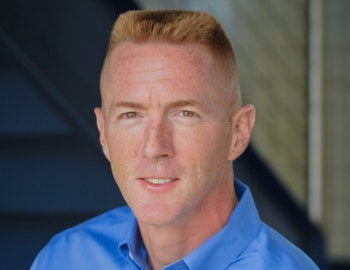
260
Home Builder Digital Marketing Strategies - Jay Dixon

259
2025 International Builders' Show Recap - Greg Bray and Kevin Weitzel

258
The 2024 Home Buyer Conversion Report - Jimmy Diffee

257
Exceptional Marketing Requires Adaptability - Tom Nelson

256
Effective Home Builder Geofencing - Greg Bray and Kevin Weitzel

255
AI Tools That Revolutionize Home Buying - Russ Wright

254
Innovative Home Builder Digital Marketing - Melissa Cervin

253
Understanding Your Home Buyer Audience - John Peragine

252
New Home Buyer Customer Experience Expectations - Josh Paul

251
Elevating Interior Design in Model Homes - Doris Pearlman
Proudly Brought To You By
Blue Tangerine helps home builders grow with sales-generating websites and ROI-focused digital marketing strategies like SEO, Paid Search, Social Media and Geofencing. Let us help you attract more leads and boost sales-contact us for a free consultation.
Would you like to take your digital marketing to the next level? Call Outhouse, the outsource hub for builders, and expert in online marketing tools. From interactive floor plans to VR tours to visualizers, plus great service, we've got you covered.
250.5
Bonus Episode: Key Touchpoints That Build Brand Trust CommVersion Webinar - Greg Bray and Kevin Weitzel

250
Personalizing Home Builder Marketing - Brian Newquist

249
Establishing a Home Builder Name and Brand - Bill Sieversten

248
What Home Buyers Really Want - Rose Quint

247
Generating Quality Referral Leads Online - Logan Shinholser

246
Forecasting Home Sales With Technology - David Lynch

245
Connecting With International Home Buyers - Christian Calusa

244
Digital Transformation for Home Builders - Brent Bommes

243
Driving More Qualified Home Buyer Traffic - Erin Yarbrough

242
2024 Home Builder Digital Marketing Summit Recap - Greg Bray and Kevin Weitzel

241
The Value of Data Management - Kyle Lintala

240
Becoming a Golden Online Sales Counselor - Terrell Turner
Proudly Brought To You By

Blue Tangerine helps home builders grow with sales-generating websites and ROI-focused digital marketing strategies like SEO, Paid Search, Social Media and Geofencing. Let us help you attract more leads and boost sales-contact us for a free consultation.
Would you like to take your digital marketing to the next level? Call Outhouse, the outsource hub for builders, and expert in online marketing tools. From interactive floor plans to VR tours to visualizers, plus great service, we've got you covered.
239
Examining the Economics of Home Building - Joel Berner

238
Got an Online Sales Counselor? - Rachel Starratt

237
Leveraging AI in Home Building Marketing - Jason Rhoads
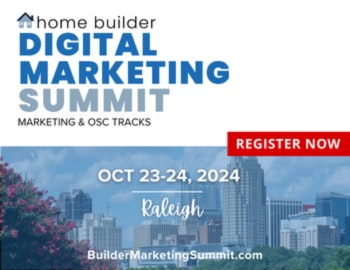
236.5
Bonus Episode : 2024 Home Builder Digital Marketing Summit Preview - Greg Bray and Kevin Weitzel

236
The Power of Content Marketing - Spencer Powell

235
Connecting Builders With New Home Buyers - Sarah Cook

234
New Construction Home Buyer Trends - Qadra Evans

233
Online Homebuyer Mystery Shopping Results - Leah Fellows and Carol Morgan

232
Generational Marketing in Home Building - Sara Gutterman

231
Leveraging Automation and AI for Growth - Jason Benedict

230
Returning to Home Builder Marketing Basics - Jake Kaplan

229
Advocating for Housing Affordability - David Belman
Proudly Brought To You By
Blue Tangerine helps home builders grow with sales-generating websites and ROI-focused digital marketing strategies like SEO, Paid Search, Social Media and Geofencing. Let us help you attract more leads and boost sales-contact us for a free consultation.
Would you like to take your digital marketing to the next level? Call Outhouse, the outsource hub for builders, and expert in online marketing tools. From interactive floor plans to VR tours to visualizers, plus great service, we've got you covered.
228
Building Connection With Home Buyers - Christopher Brown

227.5
Bonus Episode: AI in Homebuilding: A Practical Approach - Bill Gelbaugh and Al Trellis

227
Customer-Focused Home Builder Teams - Craig Neal

226
Home Builder Marketing is All About the Math - Renee Stowe

225
Female Perspectives in Home Building - Jennifer Johnson

224
Creating Compelling Copywriting - Ben Culbreth

223
Creating a Stellar Home Buyer Experience - Shawn McGuire

222
Creating Impactful Visual Content - Jacob Bettis

221
Being an AI-Ready Home Builder Marketer - Matt Brutsche

220
Utilizing AI in Home Building Processes - Doug Newell

219
Sales and Marketing: Whose Job Is It? - Part 1 - Carol Morgan and Kimberly Mackey

218
Successful Online Sales Counselors - Amberly Mioduszewski

217
Social Media Strategies for Home Builders - Courtney Stewart

216
No Leads Left Behind With an OSC - Felicia Berry

215
Maintaining a Strong Home Builder Website - Dennis O'Neil
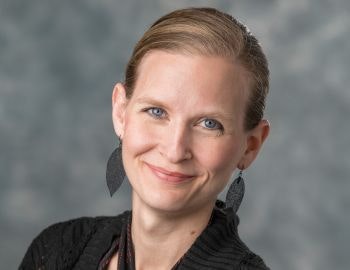
214
The Benefits of Outsourcing Digital Marketing - Mindy Lepp
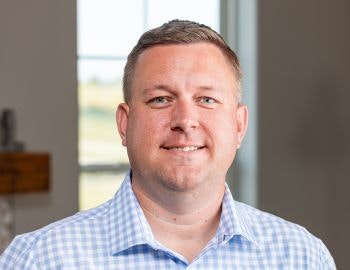
213
Learning From Other Home Builder Experts - Jim Work
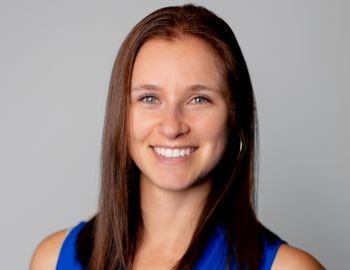
212
Fostering Trust With Homebuyers - Hayley Selden
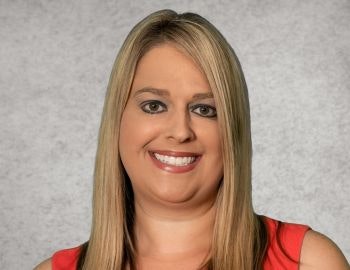
211
Expanding Social Media Marketing - Bridget Cramer
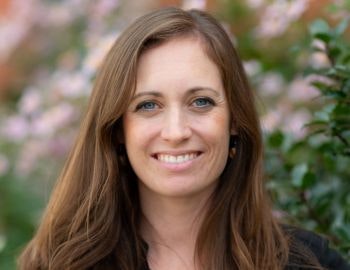
210
Creating Connection With Homebuyers - Jessica Fritz

209
Providing an Excellent Homebuyer Experience - Derek Schairer and Luke Groesbeck
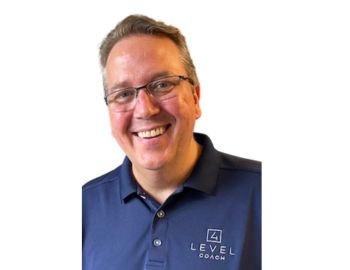
208
Growing Your Home Builder Business - Randy Stanbury
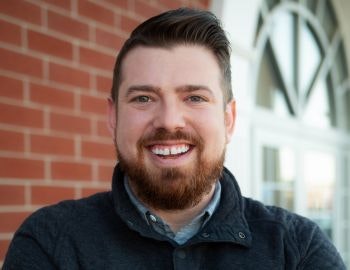
207
The Power a CRM Can Offer Home Builders - Tyler Stouder

206.5
Bonus Episode: 2024 IBS Best Sales and Marketing Tips - Greg Bray and Kevin Weitzel
Proudly Brought To You By
Blue Tangerine helps home builders grow with sales-generating websites and ROI-focused digital marketing strategies like SEO, Paid Search, Social Media and Geofencing. Let us help you attract more leads and boost sales-contact us for a free consultation.
Would you like to take your digital marketing to the next level? Call Outhouse, the outsource hub for builders, and expert in online marketing tools. From interactive floor plans to VR tours to visualizers, plus great service, we've got you covered.
206
Integrating New Home Builder Technology - Melissa Morman
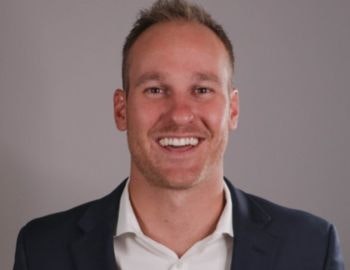
205
Simple Video Messaging for Home Builders - Justin Doornbos
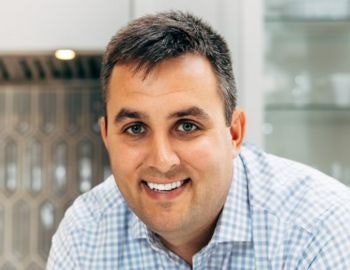
204
Nurturing Relationships With Homebuyers - Bryan Keve
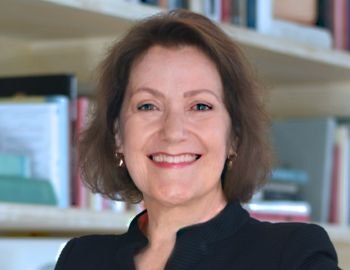
203
Building Trust With Homebuyers - Barbara Wray
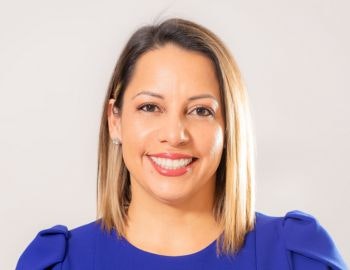
202
Building an Effective Online Sales Team - Reyna Estrada
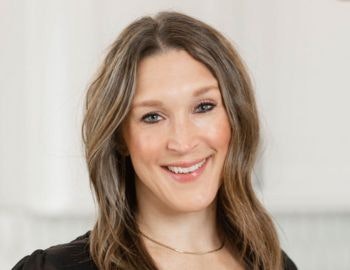
201
Creating Solutions to Marketing Challenges - Christine Vangsness

200
Keeping Home Builder Digital Marketing Fresh - Kellie Little
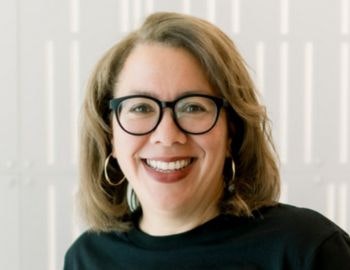
199
The Power of Good Interior Design - Lori Ann Dinkins
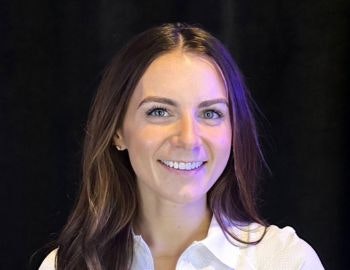
198
Customizing the Home Buyer Experience - Haley Naebig
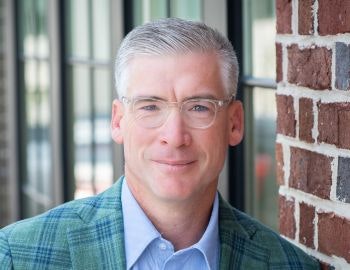
197
Exploring the Build-to-Rent Market - Jim Jacobi
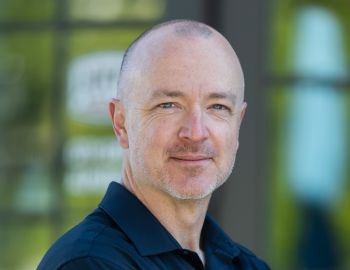
196
Crafting Quality Home Builder Photography - Chris Griggs

195
Building an Authentic Home Builder Brand - Brent Niemuth
Proudly Brought To You By

Blue Tangerine helps home builders grow with sales-generating websites and ROI-focused digital marketing strategies like SEO, Paid Search, Social Media and Geofencing. Let us help you attract more leads and boost sales-contact us for a free consultation.
Would you like to take your digital marketing to the next level? Call Outhouse, the outsource hub for builders, and expert in online marketing tools. From interactive floor plans to VR tours to visualizers, plus great service, we've got you covered.
194
Educating New Construction Home Buyers - Arthur Chapin

193
Teaming Up: Home Builders and Agents - Bill Gaul
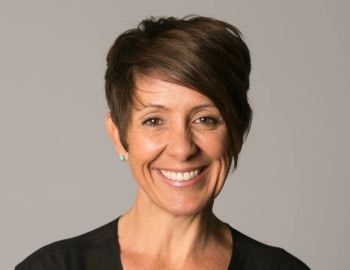
192
How to Ask for More and Get It - Dia Bondi
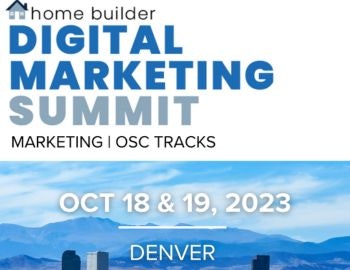
191
2023 Home Builder Digital Marketing Summit Recap - Greg Bray and Kevin Weitzel
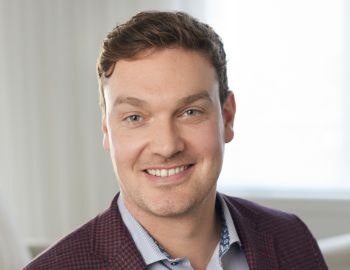
190
Elevating the Online Home Buying Process -Reilly LePage

189
Identifying the Ideal Home Buyer - Jaclyn Centofanti

188
Strategy-Driven Websites That Increase Sales - Katlyn Slocum

187
Using Virtual Experiences to Engage Buyers - Michael Shaw

186
Connecting Emotionally to Home Buyers - Kate Jarrell

185
Becoming an Exceptional Virtual Home Builder - Steve Ormonde

184
Female Mentorship in Home Building - Abby Cornelius
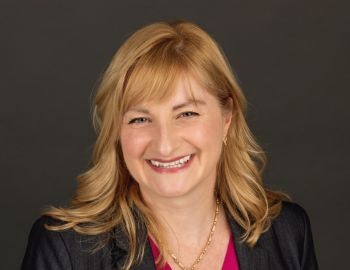
183
Home Builder Lead Management Tools - Heidi Schroeder
Proudly Brought To You By

Blue Tangerine helps home builders grow with sales-generating websites and ROI-focused digital marketing strategies like SEO, Paid Search, Social Media and Geofencing. Let us help you attract more leads and boost sales-contact us for a free consultation.
Would you like to take your digital marketing to the next level? Call Outhouse, the outsource hub for builders, and expert in online marketing tools. From interactive floor plans to VR tours to visualizers, plus great service, we've got you covered.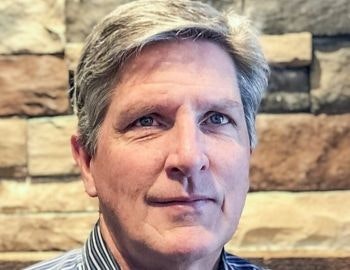
182
The Power of Proactive Communication - Paul Gortzig
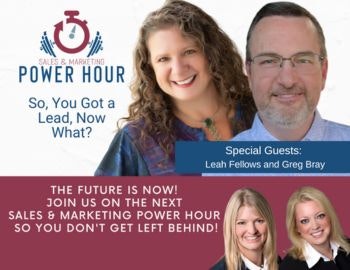
181.5
Bonus Episode: So, You Got a Lead, Now What? - Sales and Marketing Power Hour
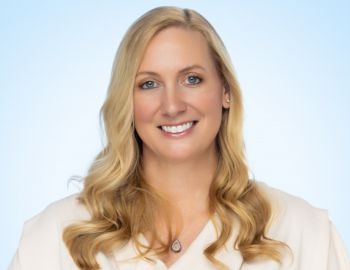
181
The Livabl New Home Listing Platform - Karyn Bonder
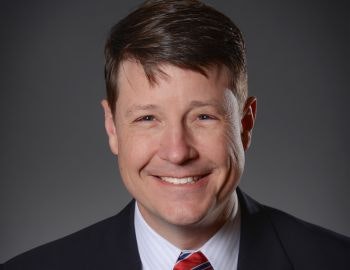
180
Unifying Marketing and Technology Teams - Ty Brewer
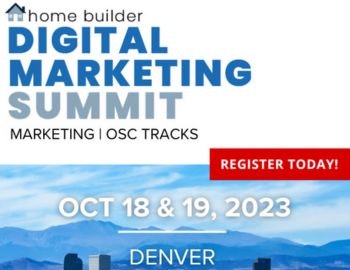
179.5
Bonus Episode: 2023 Home Builder Digital Marketing Summit Preview - Greg Bray and Kevin Weitzel

179
Home Builder Best Practices for Using AI - Barrett Davis
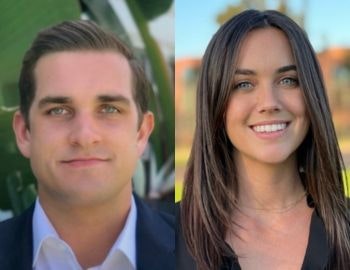
178
Eliminating Home Buyer Uncertainty - Alex Toth and Shannon McMahon

177
Generating Leads With a Top-notch Website - Chris Ashley

176
The One-House Rule of Marketing Investment - Don Dykstra and Cassius Adkison

175
Using AI to Predict Home Buyer Behavior - Will Zhang

174
Creating Happier Home Buyer Experiences - Danette Beal

173
Keeping Home Buyers Off the Rollercoaster - Eric Ziegler

172
Is Your Marketing Juice Worth the Squeeze? - Alison Girard

171
Becoming a Home Builder SuperHero - Cory Charles

170
Digital Marketing Experimentation and Risk - Tami Ostmark

169
Relocation Tools for Builders and Buyers - Brenda Keo

168
Improving Sales Performance and Success - Ben Marks and Leah Turner

167
Immersive Home Builder Technology Tools - Kevin Hart
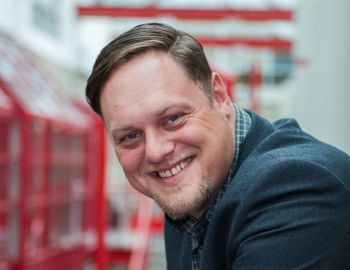
166
Content Marketing That Delivers - Jeff Schneider
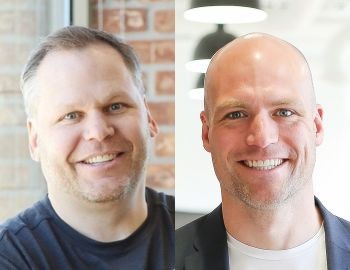
165
Business Development for Home Builders - Mike Dildine and Jared Maybon
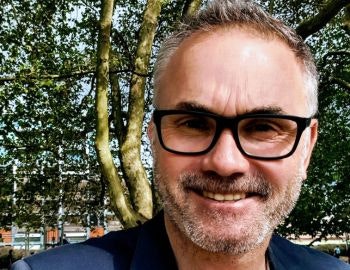
164
The Capabilities of Augmented Reality Tools - Richard Penny

163
Elevating Home Builder Photography - Chad Davies

162
Become a Specialist For Your Home Builder - Kerry Mulcrone

161
The Opportunities for PCBC Attendance - Greg Fuson
Proudly Brought To You By
Blue Tangerine helps home builders grow with sales-generating websites and ROI-focused digital marketing strategies like SEO, Paid Search, Social Media and Geofencing. Let us help you attract more leads and boost sales-contact us for a free consultation.
Would you like to take your digital marketing to the next level? Call Outhouse, the outsource hub for builders, and expert in online marketing tools. From interactive floor plans to VR tours to visualizers, plus great service, we've got you covered.
160
Putting Customers First Strengthens Business - Gina Nixon

159
Integrating Buy Online Processes - Jason Harper

158
Balancing Technology and Human Connection - Nick Chitty

157
The Benefits of Understanding Analytics - Caroline Ashe
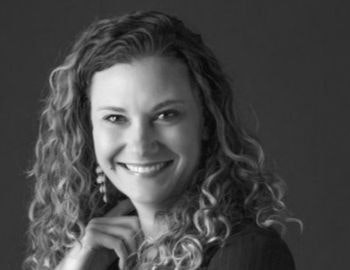
156
Trust Between Builders and Realtors - Kim Guley
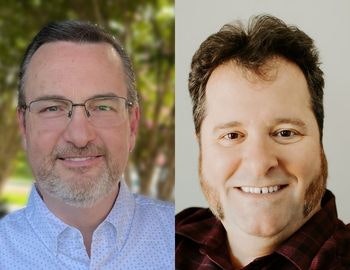
155
2023 International Builders' Show Recap - Greg Bray and Kevin Weitzel
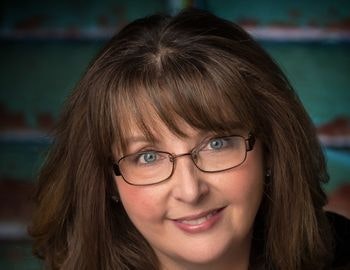
154
Understanding Today's New Home Buyer - Alisa Poncher

153
Online Buying Behavior Research Study - Blue Tangerine

152
Small Changes Can Lead to Big Results - Samantha Ostert

151
The Value of Marketing Mistakes - Carol Horton

150
The Purpose is the People in Home Building - Taylor Burtner

149
Realtors and Builders Can Be Friends - Sharra Mercer
Proudly Brought To You By

Blue Tangerine helps home builders grow with sales-generating websites and ROI-focused digital marketing strategies like SEO, Paid Search, Social Media and Geofencing. Let us help you attract more leads and boost sales-contact us for a free consultation.
Would you like to take your digital marketing to the next level? Call Outhouse, the outsource hub for builders, and expert in online marketing tools. From interactive floor plans to VR tours to visualizers, plus great service, we've got you covered.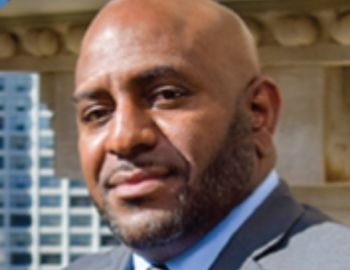
148
How Sales Can Support Marketing - Keith McKinney
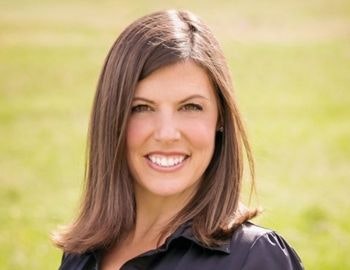
147
Information and Authentic Engagement - Danielle Davis
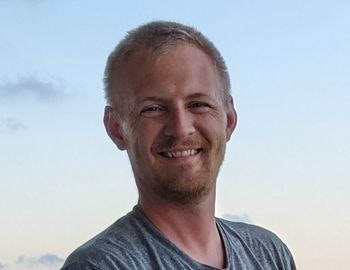
146
Influencer Marketing Strategies - Ryan Hilliard

145
Connecting With Buyers Through Communication - Corey Brady

144
The Power of Visuals in Home Builder Marketing - Mert Karakus

143
Home Builder Marketing Starts With a Story - Janell Norton

142
The Continuous Need for Change in Marketing - Eva Gribler

141
Marketing With Quality Customer Data - Ed Carey
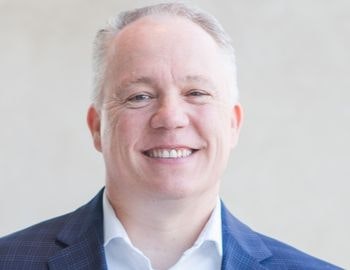
140
Balancing Sales and Marketing Initiatives - Steve Bradford

139
Successful Home Sales in Any Market - Bob Schultz
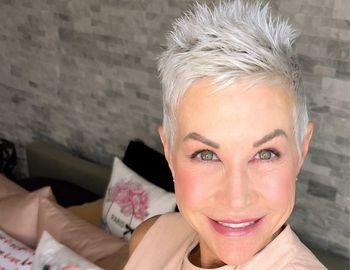
138
Giving Social Media a More Personal Touch - Gail Bonnstetter

137
Creating and Posting Social Media Content - Kelly Borgen

136
Using the Whole Buffalo in Digital Marketing - Mark Hirschfeld

135.5
Bonus Episode: 2022 Home Builder Digital Marketing Summit - Shared Drive Introduction

135
High-Level Digital Marketing is an Art - Bradley Davis

134.5
Bonus Episode: 2022 Home Builder Digital Marketing Summit - Zonda Introduction
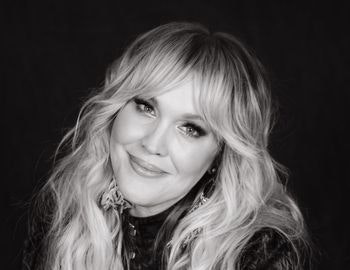
134
Prioritizing Personalization in Marketing - Kate Pourhassanian

133
Creating Tight Sales and Marketing Teams - Jordan Brown

132
High Flying Digital Marketing - Samantha Radloff

131
Audience-Focused Digital Campaigns - Kelly Holladay
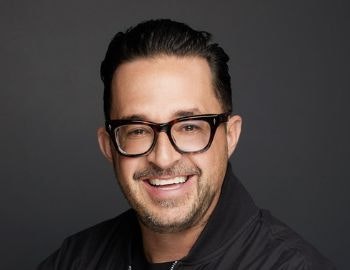
130
Digitizing the Home Buying Process - Jason Hardy
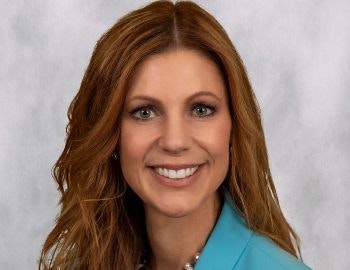
128
Providing Digital Information Effectively - Char Kurihara

127
The Keys to Social Media Marketing - Gina Stango

126
Home Builder Marketing and Millennials - Chelsey Keenan

125
Digital Marketing Requires a Team Effort - Rachel Peters

124
Focusing on SEO Basics in Marketing - Jimmy Schaefer
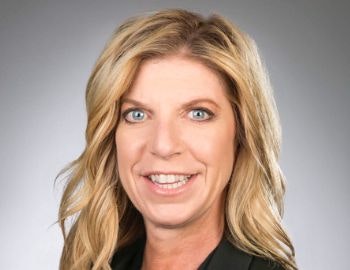
123
The Human Balance of Digital Marketing - Michelle Byrge

122
Truth Serum for Outsourcing Marketing - Jennifer Johnson
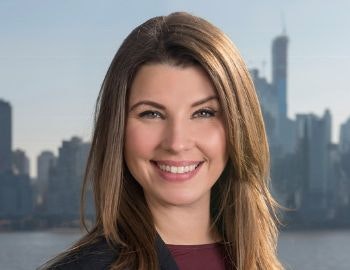
121
Mastering Multifamily Digital Marketing - Christine O'Toole
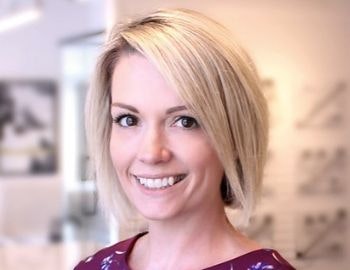
120
Marketing Doesn't Require Perfection - Melanie Gowans

119
Neuromarketing for Homebuilders - Dan Russell

118
Progress Requires Embracing Change - Brandon Elliott

117.5
Bonus: Invitation to the 2022 Home Builder Digital Marketing Summit - Greg Bray
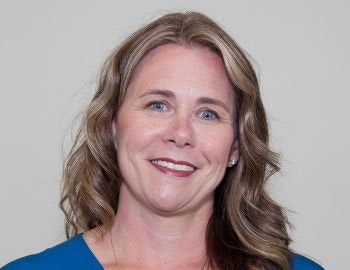
117
Tracking is the Key to Better Marketing - Janette Hawkins
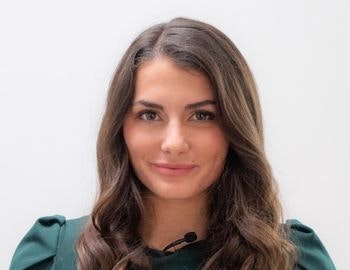
116
Digital Marketing is Worth the Money - Julia Mallozzi

115
Utilizing Content Marketing Effectively - Sarah Noel Block

114
Merging Offline and Online Tools - Shawn Corkrean

113
Effective Online Sales Counselor Practices - Tyler Grundmeier

112
The Benefits of Being a Smaller Builder - Susan Paul
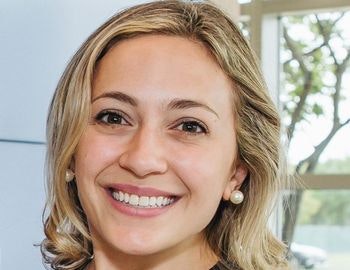
111
Focusing on the Full Customer Journey - Chelsea Kimmey

110
New Home Pricing Made Easy - Betsy Feldmann
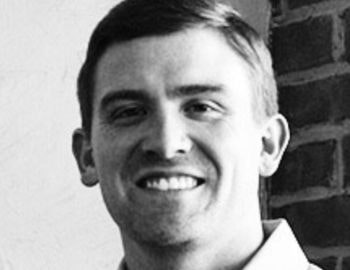
109
Providing a Service, Not Just Selling a Product - Darryl Stevenson

108
Serving Specific Home Buyers - Beth Russell

107
Let Your Human Show - Teri Slavik-Tsuyuki
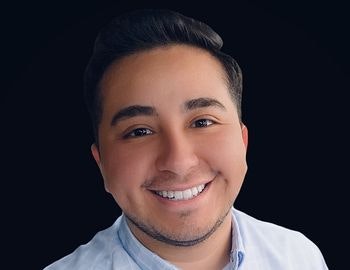
106
Diving Into Digital Marketing Data - Andrew Bazan
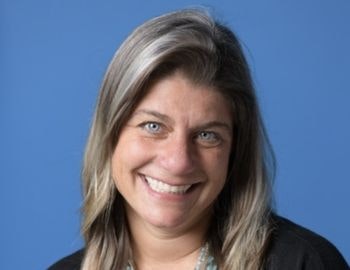
105
Marketing Through Community Involvement - Alyssa Titus
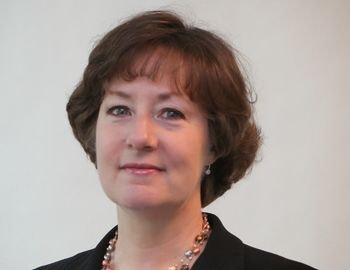
104
ADA Website Compliance - Felicia Watson
Proudly Brought To You By
Blue Tangerine helps home builders grow with sales-generating websites and ROI-focused digital marketing strategies like SEO, Paid Search, Social Media and Geofencing. Let us help you attract more leads and boost sales-contact us for a free consultation.
Would you like to take your digital marketing to the next level? Call Outhouse, the outsource hub for builders, and expert in online marketing tools. From interactive floor plans to VR tours to visualizers, plus great service, we've got you covered.
103
Adapting Sales to the Buyer and the Market - David Hagan

102
Dealing with Difficult Buyers - Bob Mirman

101
Got a Quality Paid Search Program? - Phillip Mejia

100
Where Financing Fits in Marketing - Anthony Grasst

99
Enriching Customer Experience with Technology - Amanda Kruit

98
The Biggest X Factor to Home Buying Online - Stephanie McCarty

97
Customer Expectation and Engagement Online - Mollie Carmichael

96.5
Bonus Episode: 2022 International Builders Show Preview - Greg Bray and Kevin Weitzel

96
Making Analytics Cool Again - Mila Sorenson

95
Product Is Not What Makes the Difference - Maurie Jones

94
Is Your Content Running and Groovy? - Tess Wittler

93
Shake Up Your Digital Marketing Team - Lindsay Haltom

92
Building a Rock Star Digital Marketing Team - Kim Ross

91
Making Sales and Marketing a Team Effort - Wade Hiner

90
Through the Customer Journey and Beyond - Alex Akel

89
Understanding Houzz for Home Builders - Liza Hausman

88
The Generosity of the Home Building Industry - Matthew Baehr

87
Is It Time to Bulldoze Your Website? - Cory Dotson

86
Buckets to Making Your Builder Business Better - Will Duderstadt

85
Digital Tools That Enhance Customer Experience - Linnea Chapman

84
Making Your Brand Experience Gold - Melissa Galland

83
Creating a Digital Marketing Strategy - Vithya Kuckreja

82
The Benefits of Outsourcing Sales - Melanie Mickie

81
The Expanding Roles of OSCs - Shari Morton
Proudly Brought To You By

Blue Tangerine helps home builders grow with sales-generating websites and ROI-focused digital marketing strategies like SEO, Paid Search, Social Media and Geofencing. Let us help you attract more leads and boost sales-contact us for a free consultation.
Would you like to take your digital marketing to the next level? Call Outhouse, the outsource hub for builders, and expert in online marketing tools. From interactive floor plans to VR tours to visualizers, plus great service, we've got you covered.
80
It's Not Just About Selling Homes - Dana Spencer

79
Examining Your Home Builder Business - Erik Cofield

78.5
Bonus Episode: Show Us Some Love - Greg Bray and Kevin Weitzel

78
Navigating the Buy Online Experience - Kevin Oakley

77
Builders Should Care About Third Party Listing Sites - Bob Seeman

76
NAHB’s The Nationals: Every Home Builder Should Enter - Lisa Parrish

75
Marketing and Sales Team Collaboration: A Strong Foundation - Lindsey Tapscott

74
Innovation and Preparing for the Future - Laura Ownbey

73
The Importance of Nurturing Leads Long Term - Matthew Slutsky

72
The Rise of Customer Expectations - Ben Smith

71
Adapting Across Cultures for OSCs - Cori Masters

70
Selling Emotionally, Not Circumstantially - Jason Forrest

69
Empowered Buyers' Influence in the Digital World - Tim Bailey

68
Spring 2021 Home Builder Digital Marketing Summit - Virtual Events Builder Panel

67
Understanding Programmatic Marketing Tools and Optimization - Justin Croxton

66
Spring 2021 Home Builder Digital Marketing Summit - Adjusting to Buyers - Builder Panel

65
Spring 2021 Home Builder Digital Marketing Summit - Recap
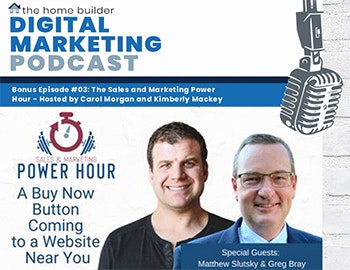
64.5
Bonus Episode: A Buy Now Button Coming to a Website Near You - Sales and Marketing Power Hour

64
Mending the Disconnect Between Sales and Marketing - Roland Nairnsy

63
Identifying Touch Points to Boost Customer Service - Debra Wyatte

62
Recruiting Builder Executives & Matching Culture - Erica Lockwood
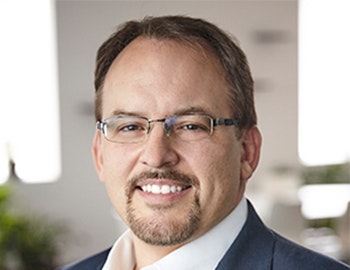
61
The Winning Formula for Home Builder Marketing - Rob Krohn

60
Flexibility to Meet Home Buyer Expectations - Ananth Rao

59
Pinteresting Your Way to Selling Homes - Alisa Meredith
Proudly Brought To You By

Blue Tangerine helps home builders grow with sales-generating websites and ROI-focused digital marketing strategies like SEO, Paid Search, Social Media and Geofencing. Let us help you attract more leads and boost sales-contact us for a free consultation.
Would you like to take your digital marketing to the next level? Call Outhouse, the outsource hub for builders, and expert in online marketing tools. From interactive floor plans to VR tours to visualizers, plus great service, we've got you covered.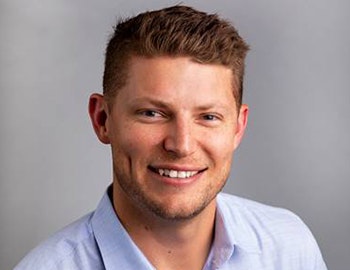
58
Engaging Home Buyers with Video Storytelling - Shane Austin

57
Focusing on How People Want to Shop - Beth Byrd

56.5
Bonus Episode: Home Builder Digital Marketing Summit: Sneak Peek

56
Using AI & Data to Nurture the Home Buyer Journey - John Hiscox

55
Immediacy & Customer Experience - Dave Betcher

54
Balancing Production Capacity and Sales - Alan Trellis

53
Handling Good Market Syndrome, “More Better” - Matt Riley

52
Striving to Innovate the Home Buyer Experience - Sarah Titus

51
The Growing Marketing Expectations in Home Buying - Kim Sandoval

50
Embracing Ever-Changing Technology - Lisa Lausten

49
Defining Principles for Customer Experience - Alaina Money-Garman

48
Willingness to Change Your Paradigm - Carl Baker

47
Leveraging Google My Business for Home Builders - Cabe Vinson

46
The Warranty & Marketing Brand Connection - Stacey Kincaid

45
Upgrade Your Marketing Like You Upgrade Your iPhone - Chad Sanschagrin

44
OSCs - The Unsung Heroes of Home Builder Marketing - Ingrid Prince

43
Inspiring Women Through the House That She Built - Kristi Allen

42
Complacency in 2021 is Rubbish - Russ Stephens

41
The Fundamental Change in Consumer Behavior - Meredith Oliver

40
Holiday Special 2020

39
Builder Panel - Home Builder Digital Marketing Summit

38
The Engagement Power of Interactive Floor Plans and Site Plans - Lauren St. Martin

37
Recap - Home Builder Digital Marketing Summit

36
End to End Value in the Customer Life Cycle - Ty Udell
Proudly Brought To You By

Blue Tangerine helps home builders grow with sales-generating websites and ROI-focused digital marketing strategies like SEO, Paid Search, Social Media and Geofencing. Let us help you attract more leads and boost sales-contact us for a free consultation.
Would you like to take your digital marketing to the next level? Call Outhouse, the outsource hub for builders, and expert in online marketing tools. From interactive floor plans to VR tours to visualizers, plus great service, we've got you covered.
35
Understanding Your Value Proposition - Jennifer Cooper

34
Shifting to Digital Marketing to Accommodate Customers - Laura Hanson
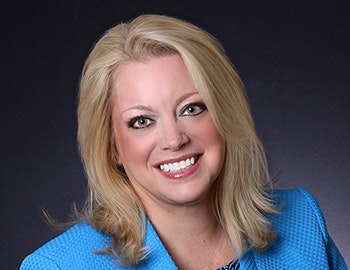
33
Process Map to Improve Your Customer’s Experience - Kimberly Mackey

32
Innovating to Make it Easy on Customers - Ashley De Young-Seibert

31
Embracing Change in Home Builder Marketing - Ronda Conger

30.5
Bonus Episode #2: Website Accessibility (ADA) - Why it's Important - Greg Bray

30
Ethical Considerations in Social Media - Mollie Elkman

29
The Keys to Manage Regional Marketing - Brenna Ryan

28
The Process of Becoming a Follow-Up Champion - Anya Chrisanthon

27
Customer Experience, The Story A Customer Will Tell A Friend - Jimmy Diffee

26
Connecting to Win More Home Sales - Quint Lears

25.5
Bonus Episode #1: Virtual Summit Series - Sneak Peek

25
Avoid Costly Hiring Mistakes in Real Estate - JoAnne Williams

24
Importance of Truly Understanding the Buyer's Needs - Dana Kovach

23
The Intersection of the Common Good and Home Building Expertise - Scott Larson

22
The Magic of Implementing a CRM - Dave Knowles

21
Evoking Home Buyer's Emotions - Stuart Platt

20
The End of the Third Party Cookie - Erik Martinez

19
Marketing Psychology & Influences on Consumer Decision-Making - Tim Curtis

18
Succeeding on Zillow - Ali Webster

17
Embracing New Technology to Boost Sales - Chris Hartley

16
Branding, The Process of Producing Trust - Dave Miles

15
Advancing the Home Buying Experience - Lynne Davis

14
How to Extend into a New Brand Segment - Michelle Smallwood from Holiday Builders
Proudly Brought To You By
Blue Tangerine helps home builders grow with sales-generating websites and ROI-focused digital marketing strategies like SEO, Paid Search, Social Media and Geofencing. Let us help you attract more leads and boost sales-contact us for a free consultation.
Would you like to take your digital marketing to the next level? Call Outhouse, the outsource hub for builders, and expert in online marketing tools. From interactive floor plans to VR tours to visualizers, plus great service, we've got you covered.
13
Introduction to the 7 Systems of Influence - Josh Steimle

12
Connecting Marketing and Sales to Impact Profitability - Bob Whitten

11
Importance of Creating a PR and Social Media Plan - Carol Morgan

10
Creating and Leveraging App-Based Customer Experiences - Kody Smith

09
Communicating with Customers on Their Terms - Bassam Salem

08
Creating Buyer's Trust with Progression Photos - Gordon Henderson

07
Re-evaluating the Value of Email Marketing - Angela McKay
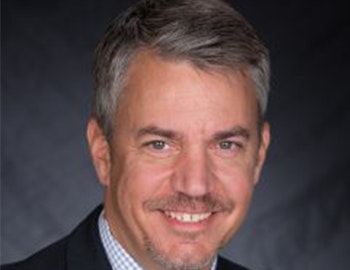
06
Attribution for Better ROI - Ben Keal

05
Leading Your Remote Team - Tips and Hints for Maximizing Employee Productivity When You Can't Be With Them

04
Importance of Online Sales Counselors - Leah Fellows
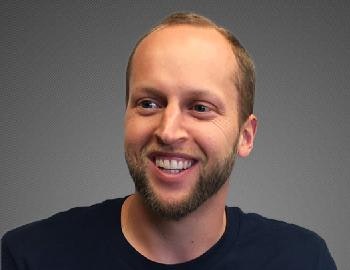
03
Generating Leads with Content Marketing - Spencer Powell

02
Meet Your Host - Kevin Weitzel
Proudly Brought To You By

Blue Tangerine helps home builders grow with sales-generating websites and ROI-focused digital marketing strategies like SEO, Paid Search, Social Media and Geofencing. Let us help you attract more leads and boost sales-contact us for a free consultation.
Would you like to take your digital marketing to the next level? Call Outhouse, the outsource hub for builders, and expert in online marketing tools. From interactive floor plans to VR tours to visualizers, plus great service, we've got you covered.
01
Meet Your Host - Greg Bray
![]()
00
The Trailer
